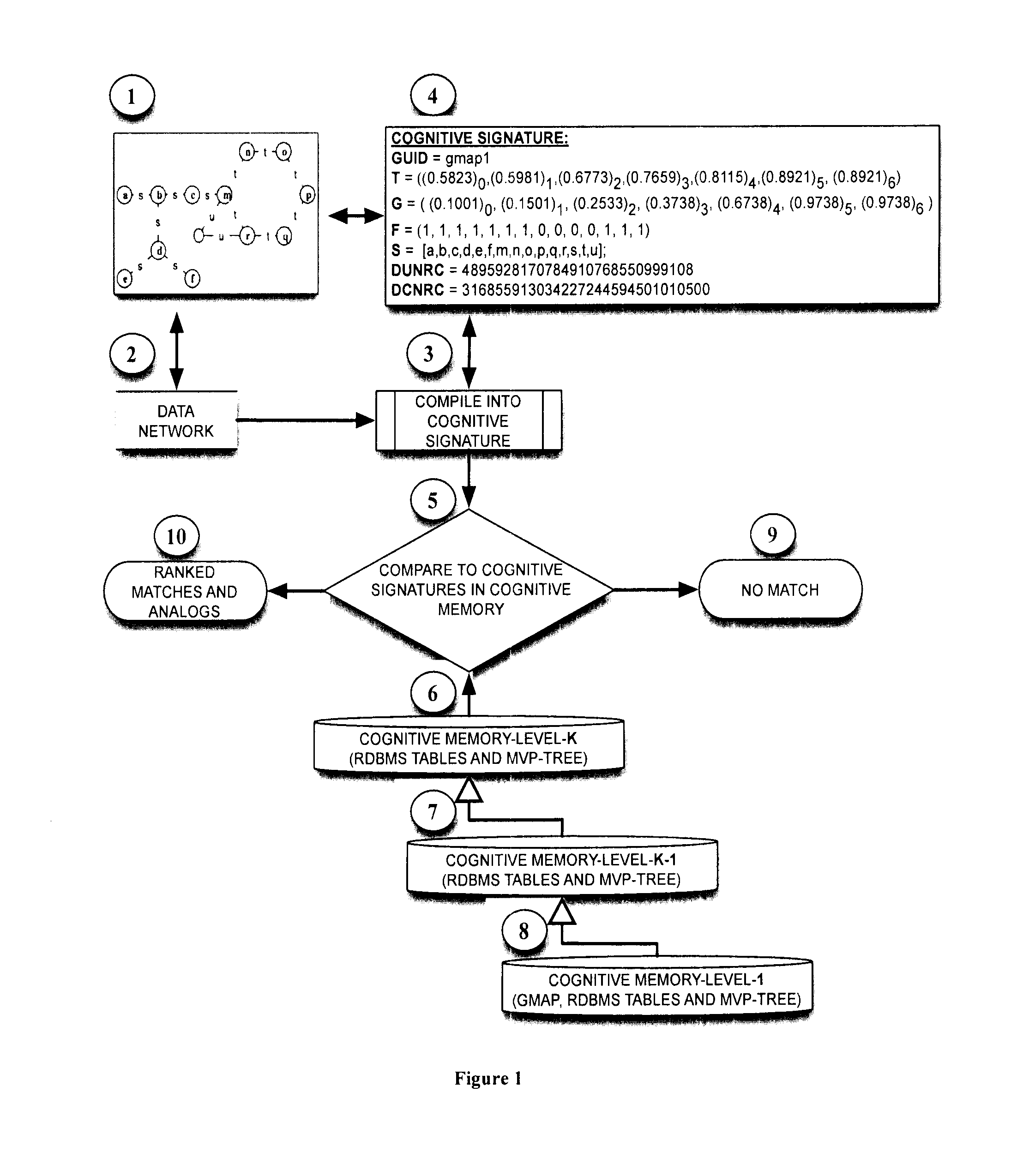Cognitive memory encoding networks for fast semantic indexing storage and retrieval
- Summary
- Abstract
- Description
- Claims
- Application Information
AI Technical Summary
Benefits of technology
Problems solved by technology
Method used
Image
Examples
Embodiment Construction
[0046]Referring now to the drawings, wherein like reference numerals designate identical or corresponding parts throughout the several views, FIG. 1 illustrates the system and encoding for Cognitive Memory encoding networks for fast semantic indexing, storage and retrieval. The system and method are described by the following numbered elements referring to FIG. 1:
[0047]A network (1), called the Data Network (2) to be processed, is presented to the system. The Data Network (2) is compiled by a process (3) into a Cognitive Signature (4), which includes a GUID (Global Unique Identity Designation) name called “gmap1” in this case (but is different and unique for each network), includes a matrix T (also called Topology) of vectors, one for each level, K, for which the input Network (1) has been contracted, and includes a matrix of vectors, G (also called Geometry) for each level K for which the input Network (1) has been contracted. Also included are the symbols, S, of the content or lab...
PUM
 Login to View More
Login to View More Abstract
Description
Claims
Application Information
 Login to View More
Login to View More - R&D
- Intellectual Property
- Life Sciences
- Materials
- Tech Scout
- Unparalleled Data Quality
- Higher Quality Content
- 60% Fewer Hallucinations
Browse by: Latest US Patents, China's latest patents, Technical Efficacy Thesaurus, Application Domain, Technology Topic, Popular Technical Reports.
© 2025 PatSnap. All rights reserved.Legal|Privacy policy|Modern Slavery Act Transparency Statement|Sitemap|About US| Contact US: help@patsnap.com



